Our review of the best bikepacking bikes answered many of our questions and taught us a lot. The list of requirements for the perfect bikepacking vehicle is long and it is important to pay attention to the components and features that are relevant to you before buying. Read on to find out what these are and where there’s room for improvement.
In our quest to find the optimal bikepacking rig, we picked 12 all-rounders, from gravel to mountain bikes, set them up with bags and panniers and set off on an exciting adventure. If you want to know which bikes secured our coveted ‘Best in Test’ and ‘Best Buy’ awards, click here (just click).

Every bike is a bikepacking bike
After numerous bikepacking trips during and before this group test, one thing is certain: every bike has what it takes to become a bikepacking bike. Depending on what you have planned and where you’re going to ride, the 3-speed Dutch bike in your basement or your high-tech road bike can both act as bikepacking accomplices and provide unforgettable moments. However, you will usually have to make some compromises, limiting your choice of route, what you can transport and how far you can ride. Some manufacturers, such as ROSE, have responded to the growing bikepacking trend and offer gravel bikes equipped with components and accessories to provide you with a versatile bikepacking rig off the shelf.
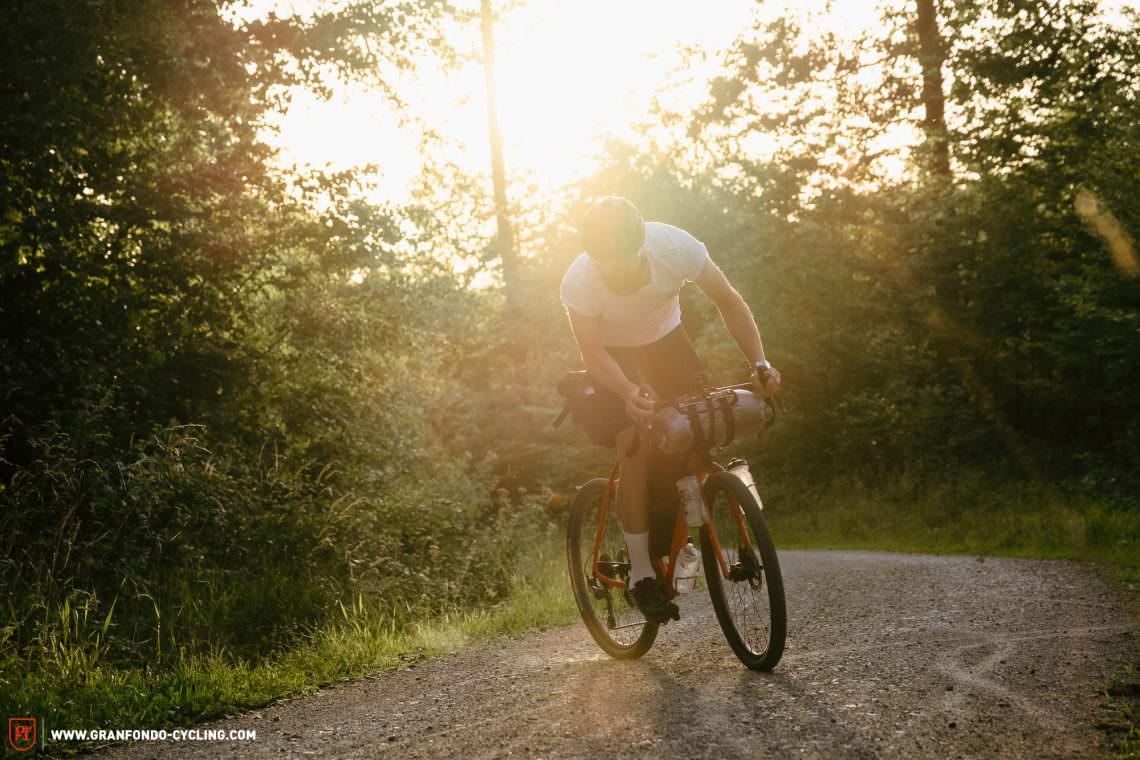
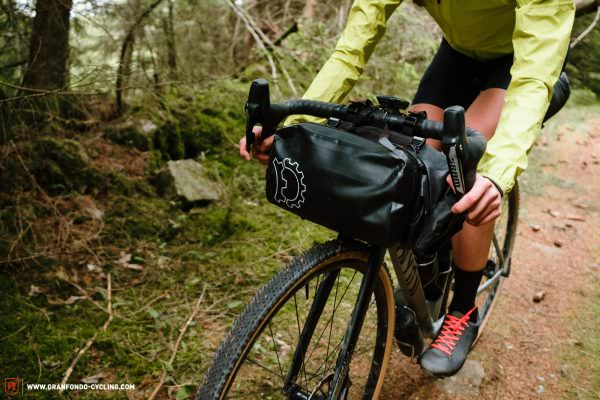


You might be asking yourself whether you even need a bikepacking specific bike when any bike can do the job? After conducting this group test, we think that bikes specifically designed for bikepacking are definitely worth the money! In terms of (long-distance) comfort, handling and versatility, they’re usually far superior to normal bikes or even gravel bikes. It’s like taking a Citroen 2CV to the Nürburgring. You’ll make it to the finish line and also enjoy a certain, albeit minimal, level of acceleration, speed and safety. However, the thrill just can’t match that of driving a Ferrari F40. Besides, bikepacking bikes also offer innovative solutions for everyday use, making them just as suitable for commuting or short rides and some even come equipped with lights. Pure gravel bikes that were designed without input from a euphoric bikepacker are often lacking in mounting points and are usually built a bit stiffer for quicker acceleration.

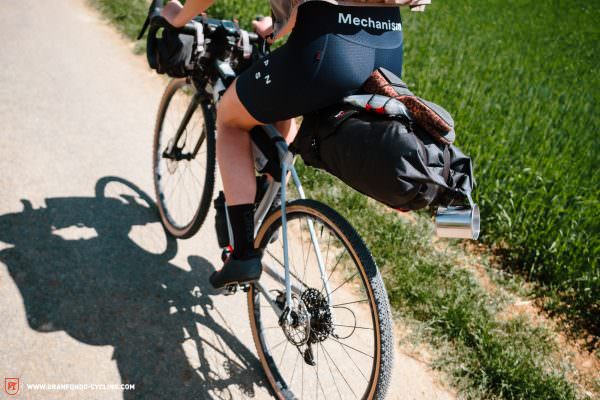

Bikepacking requires clever packing
The following scenario might sound familiar: the evening before your planned vacation, you pack your things, throw all the essentials and a few extra bits into your wheelie bag, only to find that you’re over the 20 kg permissible weight when you check-in at the airport. If that’s the case, won’t I hopelessly overload my bike on a bikepacking trip? Rest assured, all of the bikes in the test field coped just fine carrying us and an additional 7 kg payload. However, the idea behind bikepacking is that when we head outdoors, we leave behind most of the things that we consider necessary in everyday life. Bikepacking also means consciously choosing to go without one or the other (luxury) item and limiting yourself to the simple things. Of course, you should always carry a smartphone for safety reasons to be able to call for help in an emergency. On the other hand, your tablet, portable speaker and hair gel can stay at home and we can promise that you won’t miss any of it! We recommend that you don’t carry more than 10 kg of luggage on your bike, including full water bottles. If you exceed that, you know you’ve packed too much!

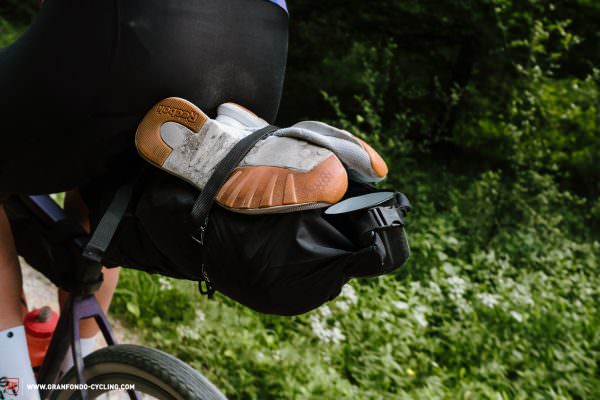



Electronic shifting sets the standard in 2020
Take a look at the flagship models of most manufacturers and you’ll quickly discover that there’s no way of avoiding electronic drivetrains in 2020. Anyone who’s previously shied away from them due to doubts about reliability and robustness will be pleased to hear we didn’t encounter any problems during our test! On the contrary, the bikes with electronic groupsets impressed with easy and reliable shifting after countless kilometres off the beaten track. If the option is there, we wouldn’t want to do without them. The advantage of bikes with a SRAM AXS groupset paired with an SRAM Eagle cassette is a huge 520% gear range with a 1x setup. Both Shimano Di2 and SRAM AXS let you easily charge your batteries on the go with a standard power bank. While the AXS batteries have to be plugged into a small charger, you can connect your power bank directly to the Shimano Di2 system, allowing you to charge while riding. If your bike has a dynamo, you won’t ever have to stop to recharge your electronic drivetrain system.
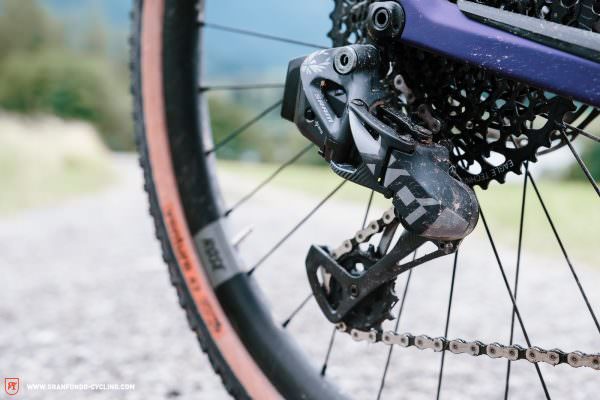

Pizza plate chainrings have no place on bikepacking bikes
Bikepacking bikes represent freedom and adventure and shouldn’t ever hold you back. Unfortunately, many bikes are limited in their versatility because the manufacturers spec them with overly large chainrings. Bikepacking isn’t about being able to accelerate while riding downhill at 70 km/h. even if the road cyclists among us would like that. It is much more important to be able to ride up steep gravel climbs while fully loaded and not have to get off the bike in frustration every time you encounter an incline. Classic bikepacking isn’t a race against time or seeing how fast you can ride and is about so much more than getting from A to B as quickly as possible. In several cases, we found it necessary to gear down the standard spec to improve the bikes’ off-road capabilities.
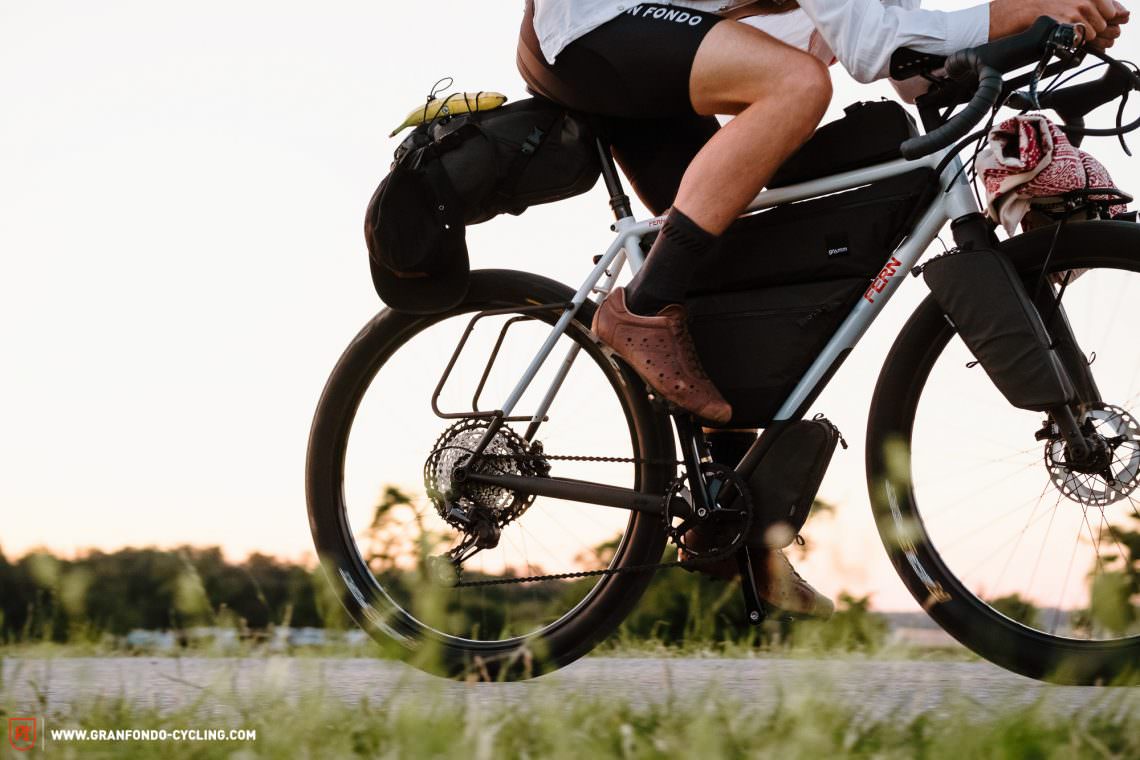


You’ll get the largest gear range with SRAM’s Mullet AXS groupset with its huge cassette – pizza plates welcome here. However, the classic 2x road bike setup lives on and is justified in doing so, even if it is a bit heavier than a 1x groupset due to the additional front mech and second chainring. As long as you make sure you have an easy enough gear, a 2x setup can offer smaller steps between gears and a larger range.


A bikepacking bike needs large rotors
Unfortunately, during the test we were confronted with many bikes that came with undersized rotors. We can’t comprehend shaving off a few insignificant grams to the detriment of braking performance. When hauling 7 kg of baggage, 20 g more or less becomes insignificant but braking power is all the more important. We recommend 180 mm rotors up front paired with 160 mm rotors at the rear, though a 160 mm rotor up front is still acceptable. Mechanical disc brakes, such as those fitted to the Rondo Bogan (click for review) and Bombtrack Hook 2 (click for review), can in principle be serviced, adjusted and repaired anywhere in the world and their braking power is just slightly below that of hydraulic braking systems. However, they’re not as easy to modulate – at least that was the case on our test bikes. The brakes initially offer minimal stopping power but as you pull the levers harder they lock the wheels. The size of the brake rotor plays a crucial role here and the smaller it is, the worse the problem becomes. Therefore, mechanical disc brakes unquestionably require large rotors for good braking performance!



Frame material for bikepacking bikes: if you have the choice, you’ll be spoiled for choice
The discussion about the best frame material for a bike is as old as the bike itself and still presents certain challenges when buying a bikepacking bike. Aluminium frames are usually too stiff for unlimited adventures and long stretches on uneven surfaces, as the Canyon Grail AL (click for review) and Mason Bokeh (click for review) gravel bikes show in this test. If you’re choosing metal, then the choice is obvious if you’re part of the ‘steel is real’ faction. However, if you want something a little more exclusive and lighter you should look at a titanium bike, which, similar to a steel frame, can also offer a lot of compliance and comfort. For example, the Mason Bokeh is also available in a titanium version. However, unlike a steel frame, it’s not as easily repairable or weldable requiring specialist tools and skills. Of course, the other obvious choice is carbon fibre. Designed right, a carbon frame can offer the highest level of comfort and just the right amount of stiffness exactly where you need it while also keeping the weight down. One disadvantage is that carbon is more sensitive to impacts, is very difficult to repair and, unfortunately, remains unrecyclable in 2020. Regardless of the material, you should protect your frame with tape (e.g. All Mountain Style Bike Guards) at the appropriate places before you mount your bags. It doesn’t matter how good the straps on your bags are, they’re guaranteed to rub off the paint over time or, even worse, damage your bike.




Our conclusion resulting from the findings of our bikepacking bike group test
After hundreds of hours in the saddle, riding countless miles on all sorts of terrain and sleeping under the stars for a few nights, we can draw several conclusions. In a nutshell, you could start your next adventure on any bike. However, bikepacking bikes are more fun because they come with a multitude of features that make them more suitable for touring life and also more comfortable – provided you pack wisely and don’t bring along too much clutter! While this may come as a surprise for some of you, electronic groupsets didn’t give us any problems and worked reliably throughout our test. As far as round things go, we’d love to see smaller chainrings and larger brake rotors in the future. Let’s be honest: when bikepacking, we’d rather have a smaller gear to negotiate steep climbs and bigger brake rotor to get at the bottom of the hill in one piece rather than a massive chainring to break speed records on the flats. As far as frame materials go, the opinions are still split and we recommend that everyone decide for themselves, according to their preferences and the intended use.
You can get an overview of this group test here: The best bikepacking bike on review – 12 all-rounders head to head

Did you enjoy this article? If so, we would be stoked if you decide to support us with a monthly contribution. By becoming a supporter of GRAN FONDO, you will help secure a sustainable future for high-quality cycling journalism. Click here to learn more.
Words: Benjamin Topf, Philipp Schwab, Andreas Maschke Photos: Benjamin Topf, Valentin Rühl, Philipp Schwab, Robin Schmitt







